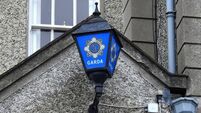Counterfeit notes alert as €13bn cash in circulation
This represents a 22% increase on the same time last year.
The Central Bank said it was also the busiest time of the year for counterfeiters due to the seasonal spending spree.
Customers are being encouraged to adopt a ‘feel, look, tilt’ test to all banknotes to enable them to detect counterfeit money.
Members of the public are advised to “feel” the raised print on the genuine banknotes as well as “look” at the watermark, security thread and see-through register and “tilt” the note to verify the hologram and colour-shifting ink on notes.
“People should always check more than one security feature of the euro notes because some counterfeit notes can duplicate some features pretty well,” said Central Bank currency security specialist Kevin Condren.
“Most of the counterfeit banknotes that we have come across have been of poor quality. It should be relatively easy to spot counterfeits.”
However, the Central Bank said retailers and members of the public may not take as much time to check notes during the busy Christmas shopping period.
A total of 300,000 bogus notes have been detected within the EU in the first six months of 2005 out of over nine billion legal tender notes in circulation. It means that just three out of every 100,000 notes is counterfeit.
It is understood gardaí have seized almost €400,000 worth of bogus notes this year, with Eastern European gangs mostly to blame.
“The number of counterfeit notes in circulation is a tiny fraction of the overall total but it can be a real problem for the individual concerned,” said Central Bank spokesman Neil Whoriskey.
The most popular counterfeit money is the €50 note because it is the most commonly used note in circulation. It accounts for 35% of all notes issued within the eurozone and 62% of all counterfeit copies.
Unfortunately, anybody who detects a counterfeit note has no financial comeback. However, the Central Bank advised people not to try and pass on any such money as they could be liable for criminal prosecution.
It is also aware that some counterfeit notes are “sold” by criminals to people willing to take a chance on using such money.
Meanwhile, the Central Bank said any decision on the introduction of the €100 note rested with the commercial banks. A spokesperson said there was no indication that there was any large-scale public demand for them in the Republic.
The Central Bank has also ruled out withdrawing the one cent and two cent coins from circulation - a move under consideration in a small number of countries in the 12-member eurozone.
It also revealed there is an estimated £300m (€381m) in Irish punts still being hoarded in people’s homes.












